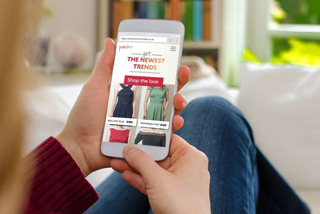
How Everyday Funding can improve cash flow

Digital trends poised to reshape hotel payments

As businesses spent the last decade trying to match consumer needs, payments kept changing. The race to keep up with technology and shifting customer expectations meant things were moving more digital. Accepting credit cards, ACH and other new payment types cut costs and increased efficiency. Despite the benefits, the road to digital transformation still has some bumps.
“Right now, each billing channel typically requires its own integration into the company’s digital ecosystem,” says Sam Robb, Senior Vice President, Head of Receivables and Healthcare Product Management. “And once a business starts to go digital, the inefficiencies with paper processing become even more exposed.”
Managing the various existing and emerging bill pay channels proves cumbersome and complex for businesses. Fortunately, the next evolution of consumer bill pay addresses those issues, as well as the challenges with different file types, disparate portals and remittance processing that many businesses face.
Billing gateway platforms are being developed that make it easier for businesses to connect with various portals as opposed to being forced to develop distinct and unique integrations to meet consumer expectations. This model can more easily integrate new billing delivery channels as they come online in the future, driving customers to digital payments.
Here are three ways this kind of billing gateway would help businesses travel further down the path to full digital transformation:
Most companies support sending paper and electronic bills today, and new delivery mechanisms are continuing to emerge. The challenge comes from each one of those channels having its own file specifications to support the delivery and presentment to the end customer.
A billing gateway eliminates that struggle.
Instead of each billing channel having its own file, businesses would only have to send one file to their bank. Then the bank would send the right bills and data to the right place, in the right format, saving time, energy and cost. Businesses can now offer multiple digital delivery mechanisms, helping to drive adoption of their preferred payment types to flow seamlessly into the rest of their digital ecosystem.
“Everyone is looking to be leaner or more efficient. A billing gateway can truly transform the way you distribute bills and manage payments – so fewer people can accomplish more faster,” says Robb.
Read more: Discover how U.S. Bank is modernizing consumer bill pay
The more technology improves and new payment types increase efficiency and save money, the more companies are incentivized to transform their business with the latest offerings. But every added payment type brings new obstacles. Businesses have to figure out how to integrate the new channels into their billing system. For example, they need to manage segmenting their customer base by the bill presentment preference, as each new option is added.
A billing gateway makes it easier to manage existing outgoing bills, but it also makes it easier to add on new options, like real-time payments and any future innovations that come next. This helps if businesses are already well on the way with their digital journey or if they’re new to the path. If they’re already processing multiple digital payments, a billing gateway simplifies that process. If they’re still waiting to embrace digital, starting this way with one consolidated file will make the onboarding much easier.
No matter how far a company travels on its digital journey, there will be challenges with migrating customers to new channels. By now, customers are familiar receiving messages like: “Click here to go to paperless bills.” As digital payments emerge, the “go paperless” message can expand into: “Move to the payment type that works best for you.” It’s easier to enable this type of transition with a bill payment gateway. If back-end processes are streamlined, there can be greater focus on maximizing efficiency.
The billing gateway makes it easier to move customers to digital methods without disruption to a business’s current operations. For example, “as businesses continue to move away from paper to more efficient payments to reduce cost, one seamless integration point allows this to occur without costly changes to back-end systems,” says Robb.
With billing being such a fundamental part of day-to-day operations, billing gateways can simplify processing and allow businesses to embrace the latest and future technologies with fewer back-end manual tasks. As technology improves, integration and connection have never been more important. The ways multiple billing and payment types can be consolidated and become part of a customer’s receivables ecosystem with less hassle will pave the way forward toward true advancement.
The payments landscape is constantly evolving. Reach out to your U.S. Bank representative today to continue the journey together.
Related content


